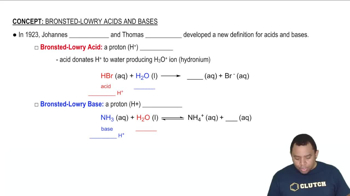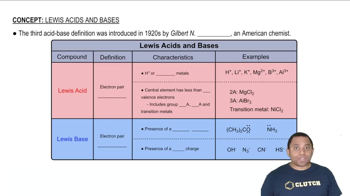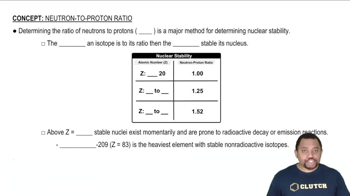Here are the essential concepts you must grasp in order to answer the question correctly.
Acid-Base Theories
There are several theories that define acids and bases, the most notable being Arrhenius, Brønsted–Lowry, and Lewis. Arrhenius acids produce H+ ions in solution, while bases produce OH- ions. Brønsted–Lowry defines acids as proton donors and bases as proton acceptors. Lewis theory expands this definition, categorizing acids as electron pair acceptors and bases as electron pair donors. Understanding these theories is crucial for identifying the nature of reactants in acid-base reactions.
Recommended video:
Bronsted-Lowry Acid-Base Theory
Lewis Acids and Bases
In Lewis theory, an acid is defined as a species that can accept an electron pair, while a base is one that can donate an electron pair. This concept is broader than the other theories, as it includes reactions that do not involve protons. For example, in the reaction between NH3 and BF3, NH3 acts as a Lewis base by donating an electron pair to BF3, which is a Lewis acid. Recognizing these roles is essential for analyzing the given reactions.
Recommended video:
Proton Transfer Reactions
Proton transfer reactions are fundamental to Brønsted–Lowry acid-base theory, where acids donate protons (H+) and bases accept them. In the reaction involving [Al(H2O)6]^3+ and H2O, the aluminum complex acts as a Brønsted acid by donating a proton to water, forming hydroxide and hydronium ions. Identifying these proton transfers helps clarify the roles of reactants in acid-base reactions and their classifications under different theories.
Recommended video:




